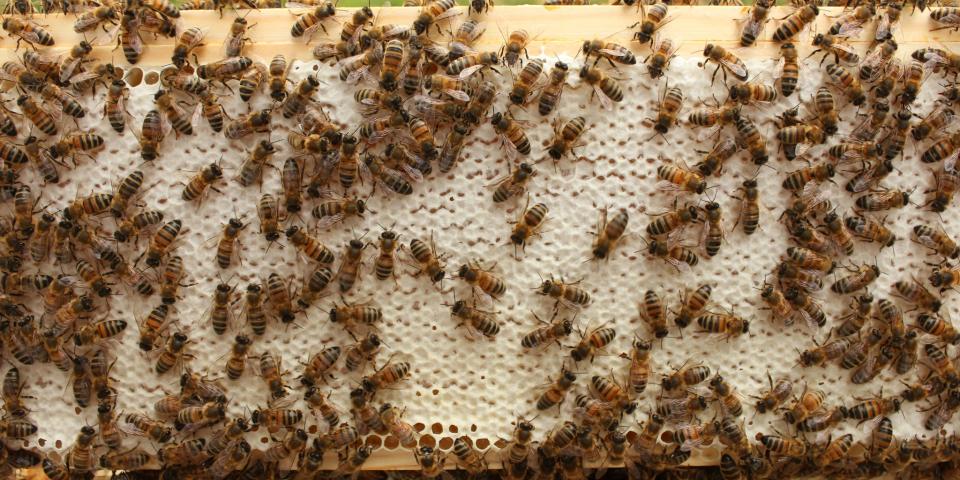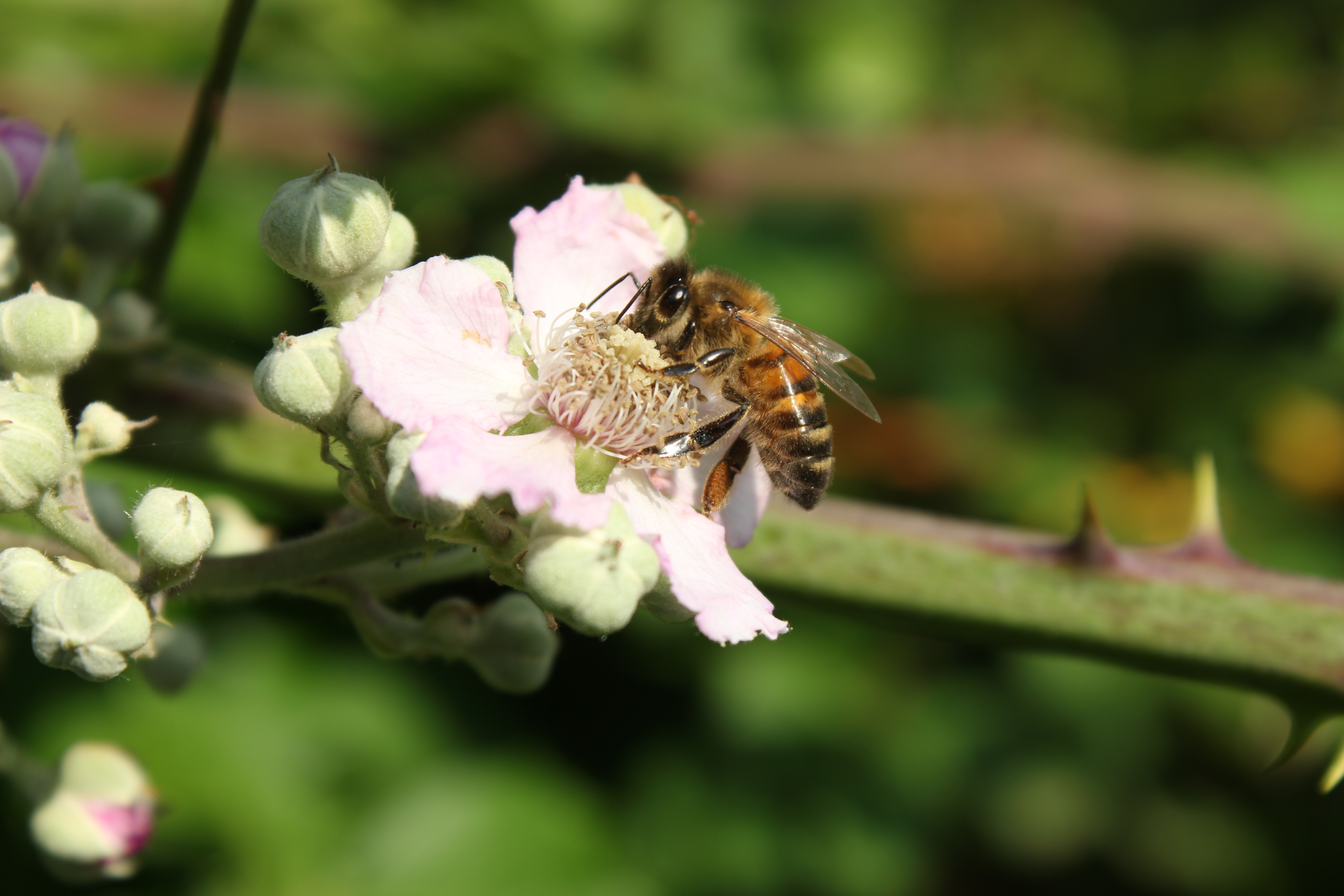- Posted By: beekeeper
- Comments: 0

After the June gap the month of July has been a very busy time for the girls as they gather as much as their little bodies can carry back to the hive from the rich pickings. They went absolutely crazy when the lime trees and privet came into blossom and now it's the turn of the brambles. Love it or hate it, we also have Himalyan balsam growing in abundance along the River Otter which is also a good source of food for honey bees and other insects - apparently it makes very good honey.
Talking of honey... the supers that are stacked up on the hive, 3 in total, have been getting heavier and heavier over these last couple of weeks. It's really quite a struggle to life them off. Now, somewhere along the lines, queen bee Lizzie managed to get up into the supers and start laying eggs - something to challenge a newbee keeper. A couple of weeks ago I didn't see her during my weekly inspection, so made a note in my records, and for some reason or other, I couldn't rest not seeing her, so a couple of days later I had another look. There she was wandering around. Bless her! She had obviously been up there a day or so and had laid eggs on five of the frames which are now hatching out. There's still some larvae still waiting for the worker bees to cap and then the new bees will emerge towards the end of July/beginning of August... just in time to extract honey!
As a beekeeper, one of the most important things to know is the lifecycle of the worker honey bee:
- Eggs hatch on day three
- Larvae develop for 6 days
- Cells sealed on day 9
- Pupae develop for 12 days
- Adults emerge after 21 days
- Life expectancy of adult is 6 weeks (summer), 6 months (winter)
By knowing this, it's possible to work out what stage the colony is at which is very useful when needing to treat the colony as part of an integrated pest management system.
As a new beekeeper, I must admit I wasn't expecting to be extracting honey at all this year. Break me in gently girls I thought and we'll tackle this one next year. But here we are - 3 supers on their way to being full of honey that will need harvesting. Thankfully there's an apiary meeting at the Exeter Beekeepers' Association on Saturday, so it will be a chance to learn about how we go about extracting honey. I've already been squirrelling away jars ever since the girls moved in with neighbours and friends all passing them on too. Looking optimistically ahead a few months ago, I started looking at honey jar labels. Casually browsing online stores and their designs. If the girls managed to make a very small breakfast jar of honey this year, that would have been good enough for me, but here we are.
Of course this could all change if the weather takes a massive turn and the girls stay indoors and need to rely on their abundance of stores to keep them going - you just never know - but just in case I ordered those labels!
Enjoy the slideshow above by hovering over and sliding forwards and backwards to the all the photos in the gallery!
The image used has been published under the terms of a Creative Commons License and is attributed to Jenifer Tucker.

